#turkic ruler
Text
Erlik Khan: The Evil God Spirit in Turkic Mythology
Origins and LineageThe Son of Gok God Altai and Mongolian Names Relationships and Kinship Erlik Khan: The Embodiment of EvilThe Punishment The Throne and the Underworld The Forbidden Branches Erlik Khan: Appearance and AttributesThe Physical Form Weapons and Mounts Artistic Depictions Erlik Khan: Symbolism and ImpactThe Source of Evil Weakness of Will Expulsion and Punishments Associated Entities…

View On WordPress
#Altai mythology#Ancient legends#Dark forces#Erlik Khan#Evil God spirit#Mythological deities#Tengricism#Turkic mythology#Turkish folklore#Underworld ruler
1 note
·
View note
Text




Abdulkarim Satuq Bughra Khan was a Kara-Khanid khan; in 934, he was one of the first Turkic rulers to convert to Islam, which prompted his Kara-Khanid subjects to convert.
#turkic#ruler#convert#islam#origin#village#father#uncle#khan#mother#marriage#son#conversion#turk#merchant#bukhara#king#mosque#town#watch#muslim#islamic#prayer#religion#temple#valley#death#mausoleum#uyghurs#architect
0 notes
Photo

“Women were included in the ranks of this fully mobilized society. Prokopios, aware, of course, of the legends of the Amazons whose origins he traces to the region of the Sabirs, reports that in the aftermath of "Hunnic" (i.e. Sabir) raids into Byzantine territory, the bodies of women warriors were found among the enemy dead. East Roman or Byzantine sources also knew of women rulers among the nomads. Malalas, among others, mentions the Sabir Queen Boa/Boarez/Boareks who ruled some 100,000 people and could field an army of 20,000. In 576 a Byzantine embassy to the Turks went through the territory of 'Akkayai; "which is the name of the woman who rules the Scythians there, having been appointed at that time by Anagai, chief of the tribe of the Utigurs." The involvement of women in governance (and hence in military affairs) was quite old in the steppe and was remarked on by the Classical Greek accounts of the Iranian Sarmatians. It was also much in evidence in the Cinggisid empire.
These traditions undoubtedly stemmed from the necessities of nomadic life in which the whole of society was mobilized. Ibn al-Faqih, embellishing on tales that probably went back to the Amazons of Herodotos, says of one of the Turkic towns that their "women fight well together with them," adding that the women were very dissolute and even raped the men. Less fanciful evidence is found in the Jiu Tangshu which, s.a. 835, reports that the Uygur Qagan presented the Tang emperor with "seven women archers skillful on horseback.” Anna Komnena tells of a Byzantine soldier who was unhorsed with an iron grapple and captured by one of the women defenders as he charged the circled wagons of the Pecenegs. Women warriors were known among the already Islamized Turkmen tribes of fifteenth century Anatolia and quite possibly among the Ottoman gazfs (cf. the Bacryan-z Rum "sisters of Rum")”.
Golden Peter B., “War and warfare in the pre-cinggissid steppes of Eurasia” in: Di Cosmo Nicola (ed.), War and warfare in Inner Asian History
#history#women in history#warrior women#warriors#Akkayai#6th century#historyedit#historyblr#central asia#scythians#sarmatians
66 notes
·
View notes
Text
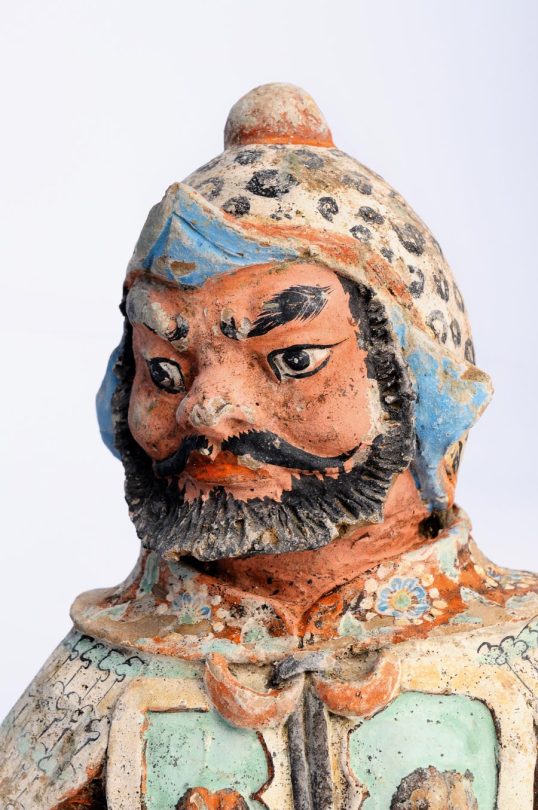
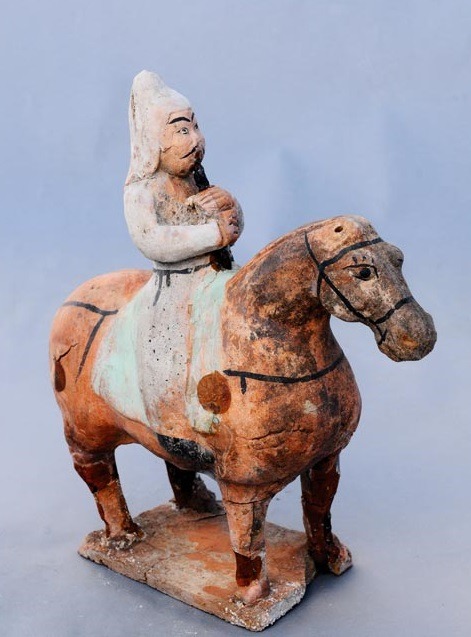

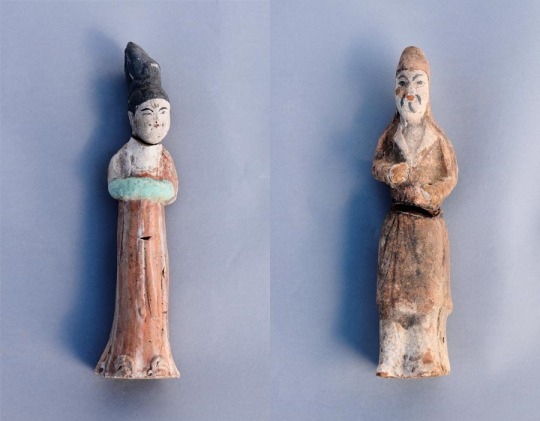


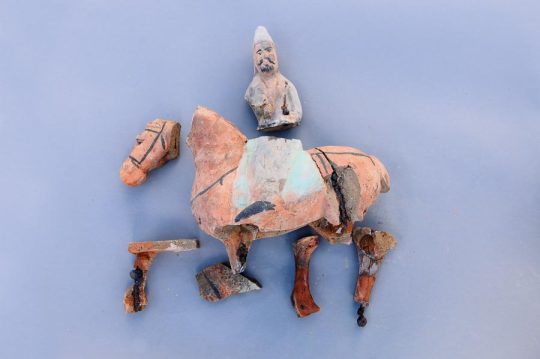
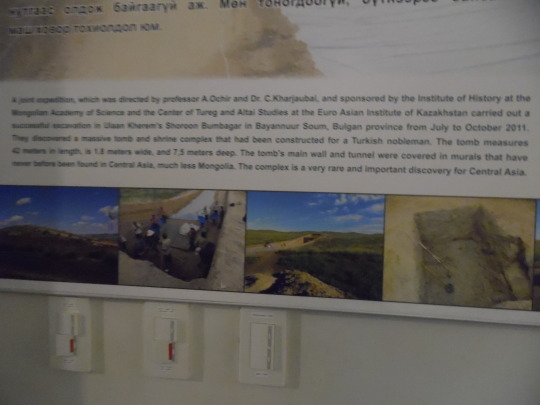




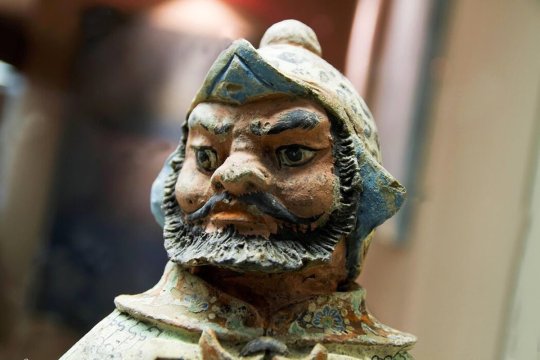
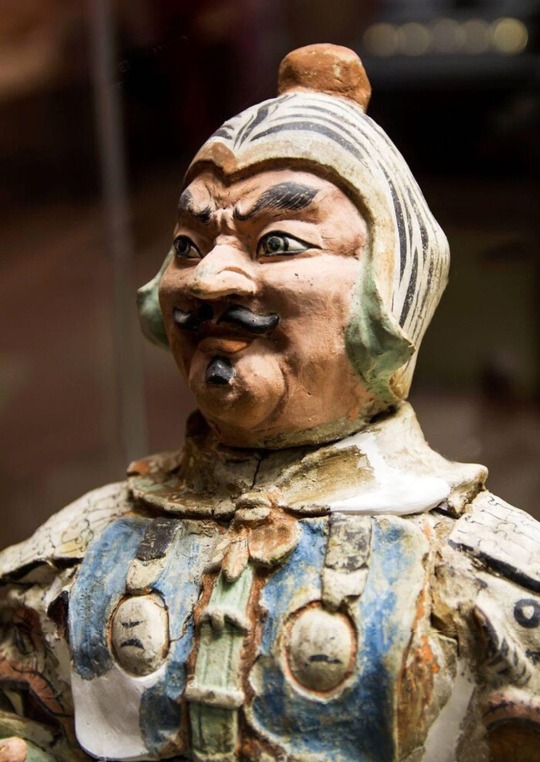
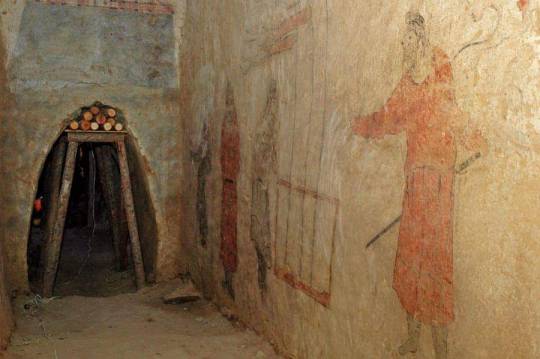

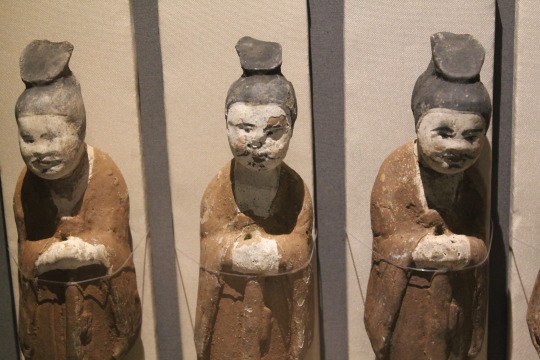

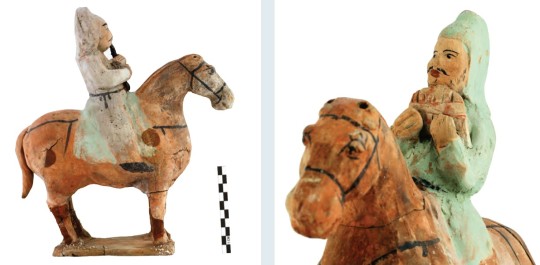

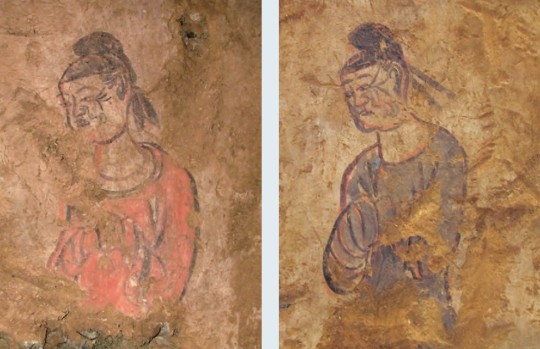


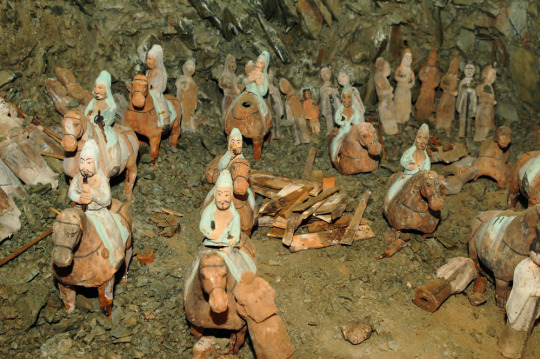





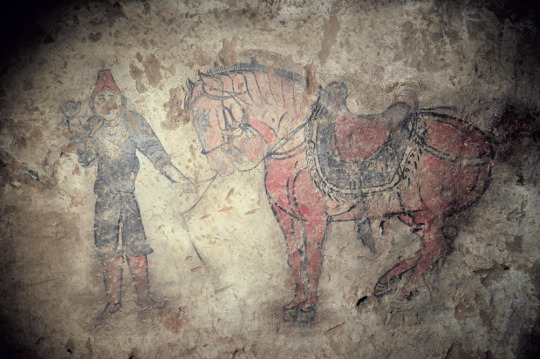
Shoroon Bumbagar, tomb of a Turkic (Gokturk) nobleman, 650-700 CE
"Like Chinese historians, Muslim writers in general depict the ‘Turks’ as possessing East Asian physiognomy. For instance, Sharaf al-Zamān Tāhir Marvazī describes them as being ‘short, with small eyes, nostrils, and mouths’ (1942: 53–4, 156). Similarly, Tabarī (d. 923) depicts the ‘Turks’ as being ‘full-faced with small eyes’ (1987: 21). In his Qābūs-nāma, the eleventh-century Ziyarid ruler Kai Kā'ūs also describes the ‘Turks’ as possessing ‘a large head (sar-i buzurg), a broad face (rūy-i pahn), narrow eyes (chashmhā-i tang), and a flat nose (bīnī-i pakhch), and unpleasing lips and teeth (lab va dandān na nīkū)’ (Kai Kā'ūs ibn Iskandar 1951a: 103; 1951b: 64). The Arab historian and geographer al-Mas'ūdī (896–956) writes that the Oghuz Turks residing in Yengi-kent, a town near the mouth of the Syr Darya, ‘are distinguished from other Turks by their valour, their slanted eyes, and the smallness of their stature’ (wa hum ashadd al-Turk ba’san wa aqsaruhum wa asgharuhum a‘yunan wa fī al-Turk man huwa aqsar min hā’ulā’) (al-Mas'ūdī 1962–: Vol. 1, 212). However, Muslim writers later differentiated the Oghuz Turks from other Turks in terms of physiognomy. Rashīd al-Dīn writes that ‘because of the climate their features gradually changed into those of Tajiks. Since they were not Tajiks, the Tajik peoples called them turkmān, i.e. Turk-like (Turk-mānand)’ (Rashīd al-Dīn Fażlallāh Hamadānī 1988: Vol. 1, 35–6; Rashiduddin Fazlullah 1998–99: Vol. 1, 31). Hāfiz Tanīsh Mīr Muhammad Bukhārī (d. c. 1549) also relates that after the Oghuz came to Transoxiana and Iran, their ‘Turkic face did not re-main as it was’ (1983: fol. 17a (text), Vol. 1, 61 (trans.)). Abū al-Ghāzī Bahadur Khan similarly writes that ‘their chin started to become narrow, their eyes started to become large, their faces started to become small, and their noses started to become big’ after five or six generations (Abu-l-Gazi 1958: 42 (text), 57 (trans.); Ebülgazî Bahadir Han 1975: 57–8). As a matter of fact, the mixed nature of the Ottomans, belonging to the Oghuz Turkic group, is noted by the Ottoman historian Mustafā Ālī (1541–1600). In his Künhü'l-ahbār, he remarks that the Ottoman elites of the sixteenth century were of mostly of non-Turkic origin: ‘Most of the inhabitants of Rum are of confused ethnic origin. Among its notables there are few whose lineage does not go back to a convert to Islam …’ (Ekser-i sükkān-i vilāyet-i Rūm meclis-i muhtelit ul-mefhūm olub ā‘yānında az kimsene bulunur ki nesebi bir müslüm-i cedīde muntehī olmaya) (Fleischer 1986: 254; Mustafā Ālī, Künhü'l-ahbār 1860–68: Vol. 1, 16)."
-Joo-Yup Lee & Shuntu Kuang, A Comparative Analysis of Chinese Historical Sources and Y-DNA Studies with Regard to the Early and Medieval Turkic Peoples
78 notes
·
View notes
Text

Legends and myths about trees
Legendary tree deities (23)
Metsaema – the mother spirit of the forest in Estonian mythology.
The name Metsaema translates to "forest mother" in Estonian (from metsa "forest" and ema "mother"). For this reason, the word metsaema can also be used as a descriptor of other similar deities in Eastern European mythology, for example Vir'ava.
The mother of the forest acts as ruler and guardian. She is sometimes also connected with fertility, acting as a midwife in some texts. Forest spirits are said to be found in each forest, ruling over the animals, birds, trees, and berries. Wild animals such as bears, snakes and wolves are commonly connected with them across European mythologies.
The shared elements of Finnic, Slavic, Baltic and Turkic mythology can be seen in similarities between forest mother spirits. Metsaema has strong similarities with the forest mother spirits Vir'ava, from Mordven mythology, and Meža mate, from Latvian mythology. Other related deities are the Lithuanian goddess of the forest and animals, Medeina, and the Finnish goddess of the forest, Mielikki (Ref).
[Photo below: European pine marten ]
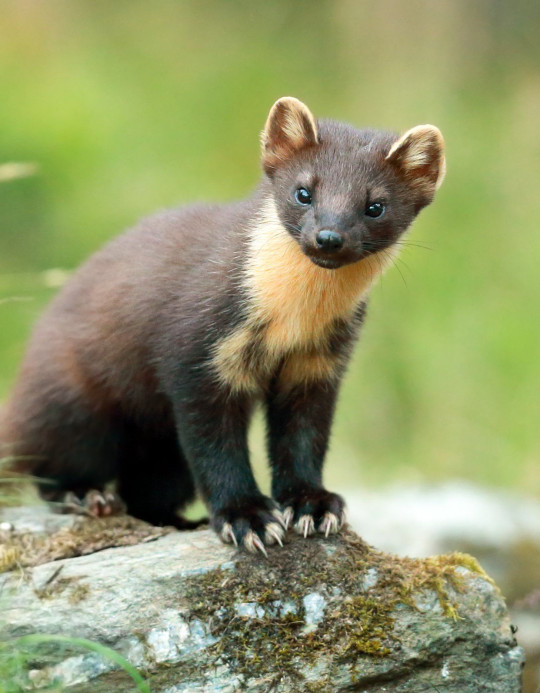
木にまつわる伝説・神話
伝説の樹木の神々 (23)
メッツァエマ 〜 エストニア神話に登場する森の母なる精霊
メッツァエマという名前は、エストニア語で「森の母」と訳される(メッツァは「森」とエマは「母」の意)。このため、メッツァエマという言葉は、例えばヴィラーヴァのような、東欧神話に登場する他の類似した神々を表す言葉としても使われる。
森の母は支配者であり守護者である。彼女は時に豊穣にも関係し、助産婦のような役割を果たすくだりもある。森の精霊はそれぞれの森に存在し、動物、鳥、木、木の実を支配していると言われている。熊、蛇、狼などの野生動物は、ヨーロッパの神話に共通する。
フィンランド神話、スラブ神話、バルト神話、テュルク神話に共通する要素は、森の母なる精霊の類似性に見ることができる。メッツァエマはモルドヴェン神話の森の母なる精霊ヴィラーヴァやラトヴィア神話のメジャ・マテと強い類似性がある。他にも、リトアニアの森と動物の女神メデイナや、フィンランドの森の女神ミエリッキ(参照)が関連している。
#trees#tree myth#tree legend#Metsaema#folklore#mythology#legend#estonian mythology#forest mother#forest#european pine marten#forest spirit#nature#art
145 notes
·
View notes
Note
sad how these "freedom for..." posts never include xinjiang because people aren't willing to take a stand against islam the way they are christianity. uygurs are facing genocide on two fronts - from the ccp and from islamists. there's only one uygur temple still standing - all the others have been demolished by muslim extremists. abrahamic religions colonising the world and brutally oppressing native religions and cultures is a tale as old as time, but people are stuck in the weird mindset that abrahamic religions are deserving of respect.
Idk what temples you're talking about, but "Uyghurs are actually a multi-faith society that was forcibly converted to Islam" is CCP propaganda to lie about the fact that they're genociding the Uyghurs for being Turkic Muslims and destroying their mosques and shrines.
I'm just going to lay aside the world-ending irony of accusing "Islamists" (whatever the fuck that is) of colonizing and forcibly converting a people...who live on top of China. I mean I tried to figure out which stage of Chinese history you're trying to erase to get here, but the answer can only be "all of it". China apparently both exists and doesn't exist for you. But Schroedinger's geo-politics or not, I can't let the "Abrahamic religions" bit stand because this horseshit is gaining way too much traction in South Asia.
Judaism, the world's oldest religion, being an upstart colonizing force is a frankly wild thing to say. I even tried to find mention of any colonization by Jews before Palestine and only found a couple of dynasties and vassal states under Ancient Rome. If you're talking about the Khazars in the sixth century, the rulers converted to Judaism voluntarily and there's no evidence it was either imposed or predominant among the rest of the population. Otoh, Jews have been repeatedly expelled, colonized and subjugated by Christians and Muslims (which is why most of their holidays are just "Yay We Didn't All Die"), and Muslims have suffered under Christian colonization for the last two hundred years along with the rest of us, and a lot longer in Europe. Islamic Empires rarely forced conversions (and in fact didn't like having too many Muslim subjects because non-Muslims were made to pay them taxes) and because of that were generally more tolerant than Christian ones, especially of Jews and Christians whom they considered "People of the Book". I mean persecution and ethnic cleansings did happen, depending on who was in charge (the Almohad Empire was particularly awful, which maybe explains the Catholic violence of Spain and Portugal), but in general, mass conversion wasn't the point of colonization. Among the Turkic peoples especially it was trade that spread Islam, not war or colonization, unlike shit-ass Portuguese traders who said, "We come in search of Christians and spices" and proceeded to kill and colonize everyone and torture them into converting. No fucking way you're lumping all of them in one "Abrahamic" colonial basket.
And the Christian legacies that endure in colonized societies are still as legitimate and integral part of their cultural identities. Once something is absorbed into a culture, the way it's shaped and used is unique to that society. Culture is a living, growing thing, like tree roots. It absorbs, merges, winds itself around generational traumas and obstacles and evolves in new trajectories. Whether or not you approve of the contortions of its survival and whether it looks different at the tip than at the root, it's still the same tree. That's why all religions deserve respect. You can't extricate or pathologize them apart from the individuality of the billions of human beings they shape. And all human beings share the same capacity for violence. Ideology has always been a rationalization for the violence we already want to commit. What motivates violence is power, not ideology, which is why we say "history repeats itself"—the dynamics of power are universal and consistent throughout history.
All our civilizations and cultures are as shaped by violent contact as by peaceful ones; ascribing the violence and impact of colonization only to Christian and Islamic empires completely erases thousands of years of histories all over the world (you know, like Imperial China???) Religions don't grow out of the ground; they were always evolved and spread among peoples along the lines of trade, migration, war, annexation, assimilation and resistance. Considering the religious identities of some people (always minorities too—isn't that weird?) inferior or illegitimate because they were "external impositions", and advocating a "return" to a "pure and untouched" past that never existed is the rhetoric of ethnosupremacy, colonization and manifest destiny—in short the language of genocide. I should know, I hear this crap out of fundamentalist Hindus and Buddhists in South Asia all the time. That's why I'm protective of Muslims. Because they're vulnerable to pieces of racist shit like you.
#islamphobia#racism#uyghur genocide#colonization#antisemitism#ethnic cleansing#palestinian genocide#religious tolerance#chinese imperialism#world politics#history#ethnofascism#ethnosupremacy#asks#anon#knee of huss
41 notes
·
View notes
Note
Was there a preference for pretty, androgynous boys in upper-crust Tang China? I'm quite impressed at how much different societies enjoy them!
In all my sources, men in Tang were preferred men who were strong and masculine.
Physical abilities received special attention during this era. Those proficient in horse riding, archery, swordsmanship and martial arts were showered with praise. Remember that although the Tang rulers were Han, they were very influenced by western cultures whuch as all the Turkic peoples, so men who rode horses all day couldn't be androgynous beauties without dirt in their nails. Men, even the young ones, sported bears very often (when possible). Many outdoor sports and activities were enjoyed during the Tang, so again, no delicate youth with white skin.
However, beautiful pale skinny men were the standart both before Tang and afterwards. Earlier, in a story recorded in Zuo Zhuan (《左传》), the earliest annals in China, a woman vacillated between a gentle man and strong one. She eventually chose the latter. And the Book of Songs (《诗经》), or Shi Jin, which recorded the ancient odes and songs in China, "beautiful white jade" and "flowers" were used to describe nice looking men. Later, in Ming, when our author writes, in the Chinese novel The Dream of Red Chamber, the protagonist Jia Baoyu was described as having a beautiful fairy face, with the glory of the moon and color of spring flowers on his cheek.
They are very popular indeed everywhere right now, thanks to K-Pop I guess. I have no preference, but my partner looks more Tang than Ming for example.
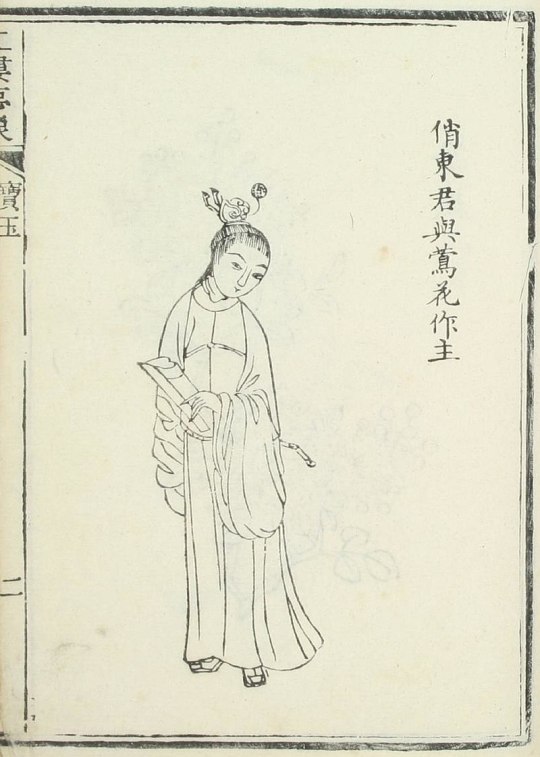

26 notes
·
View notes
Text
Meanings of names. Batim/Batdr edition!
Hello there! I'm back with another name meanings list! This time it's the Bendy verse, because it was immortalized (Hehe heh get it) yet again, and I couldn't be more excited.
So! I will be doing the primary characters for both games, BUT not all of them. I’ll be doing all the folks from Batim, since there aren’t as many as in Batdr, which added a TON of new characters and I for the live of me can't do them all. It would take me an eternity, so there... So, I won’t do those who had like one tape or memo. Sorry. I also will not be including characters from the comics or the books. Yeah. (but I can do a part 2 if you guys want ehehehehe)
Let's go!
Toons (not doing the corrupted versions, they’re technically the same)
Bendy. I'm pretty sure that Meatly made it up from the name of some editing program. Something something Bender, not sure.
Boris. From a Bulgar Turkic name, also recorded as Bogoris, perhaps meaning "short" or "wolf" or "snow leopard". Hey! Literally a wolf!
Alice. From the Old French name Aalis, a short form of Adelais, itself a short form of the Germanic name Adalheidis, which means "noble type". Hmm, I like it! Fits her. I’m obviously also counting Twisted Alice and Allison Angel. They all have the same name.
Charley (one of my favourite characters hehehehe). Diminutive form of Charles, which means "man". Literally. Just man. MAN. That’s it. I guess that fits... Charley is, after all, A MALE. Yeah.
Barley. Means “grower of barley”. Lmao. Just like that.
Edgar. Derived from the Old English elements ead "wealth, fortune" and gar "spear". I mean... I guess? He has nothing to do with spears, but he’s got fangs. They’re sharp. Spears are sharp.
Humans (from here on going in alphabet order)
Allison Pendle. Norman French diminutive of Aalis, so basically the same as Alice. Cool! She’s very sweet, so it fits for her as well!
Audrey Drew (putting her here because I don’t really count her as an ink entity). Medieval diminutive of Æðelþryð, which is derived from the Old English elements æðel "noble" and þryð "strength". Oh, she sure is strong!
Bertrum Piedmont. Means "bright raven", derived from the Germanic element beraht "bright" combined with hramn "raven". Uhhmm. Ooook then. Not sure where the raven comes from.
Daniel ”Buddy” Lewek. From the Hebrew name דָּנִיֵּאל (Daniyyel), meaning "God is my judge". Nuuuu, Buddy:( I still feel very bad for him... Man, poor guy.
Grant Cohen. From an English and Scottish surname that was derived from Norman French grand meaning "great, large". Well, his boss had GRANT plans for the studio (please don’t hurt me, I know the pun is bad).
Henry Stein (the man!). From the Germanic name Heimirich meaning "home ruler", composed of the elements heim "home" and ric "ruler". OOOOHH, i love it! Considering he is the actual creator of Bendy, he technically is the ruler!
Jack Fain. Derived from Jackin (earlier Jankin), a medieval diminutive of John, which itself is derived from the Hebrew name יוֹחָנָן (Yochanan) meaning "Yahweh is gracious". Maybe Jack is jewish? It’s unlikely, but I literally don’t know what to say here.
Joey Dr(ew). Diminutive of Joseph, which was from the Hebrew name יוֹסֵף (Yosef), meaning "he will add". Endless torment, that’s what he’ll add. Ugh, poor Henry.
Lacie Benton. Variant of Lacy. From a surname that was derived from Lassy, the name of a town in Normandy. I couldn’t really find anything else, so...I guess?
Nathan Arch Sr. From the Hebrew name נָתָן (Natan) meaning "he gave". Wha- what’d he give? A new chance for Bendy to be relevant again? Idk, really.
Nathan ”Wilson” Arch Jr (please don’t hurt me, but I kinda like him as a villain... Like, yeah, he’s creepy as all heck, but isn’t that kinda the point? So there, I said it). I will be doing his moniker, since duh. The name comes from an English surname meaning "son of William". Eeeehhhh, almost fits, just replace William with Nathan.
Norman Polk (eeeeyyyy it’s ma dude!). From an old Germanic byname meaning "northman", referring to a viking. Now that’s interesting. I can’t tell English accents apart very well, but I saw someone say he’s got a southern accent. And then there’s NORTHman. Hmmmm.
Sammy Lawrence. Diminutive of Samuel, coming from the Hebrew name שְׁמוּאֵל (Shemu'el), which could mean either "name of God" or "God has heard". Lmao, I guess his god really did hear him. And decided to fucking murder him.
Shawn Flynn. Anglicized form of Seán, which on itself is the Irish form of John, so basically the same as Jack.
Susie Campbell. Diminutive of Susan. This was derived from the Hebrew word שׁוֹשָׁן (shoshan) meaning "lily" (in modern Hebrew this also means "rose"), perhaps ultimately from Egyptian sšn "lotus". Oh, maybe those are her favourite flowers!
Thomas Connor. Greek form of the Aramaic name תָּאוֹמָא (Ta'oma') meaning "twin". OH he and Buddy are technically twins! Or, well, clones.
Wally Franks. Diminutive of Walter, which comes from a Germanic name meaning "ruler of the army", composed of the elements wald "rule" and hari "army". Pffft, he’s the ruler of the army that got OUTTA THE STUDIO, yeah ok it fits.
Ink entities (not doing Sammy, Jack and Norman for obvious reasons)
Betty. Diminutive of Elizabeth. From Ἐλισάβετ (Elisabet), the Greek form of the Hebrew name אֱלִישֶׁבַע ('Elisheva') meaning "my God is an oath". The heck- did she turn into Sammy?
Big Steve. Short form of Steven, which derives from the Greek name Στέφανος (Stephanos) meaning "crown, wreath". Uhh, I guess? Is there something that we have yet to discover?
Heidi. German diminutive of Adelheid, which means "noble type", from the French form of the Germanic name Adalheidis. Damn, what’s with all the nobles? Unrelated, but I love her bowtie.
Porter. From an occupational English surname meaning "doorkeeper". Oooohh, ok then, he technically is one.
And that’s it! Whew, took me quite some time. Please do tell me if you want a part two with the other folks! I’m not sure, when (and if) I’ll make it, we’l have to see.
#bendy and the dark revival#bendy and the ink machine#bendy#boris the wolf#alice angel#the butcher gang#batim charley#batim barley#batim edgar#allison pendle#audrey drew#bertrum piedmont#buddy lewek#grant cohen#henry stein#jack fain#joey drew#lacie benton#nathan arch#wilson arch#norman polk#sammy lawrence#shawn flynn#susie campbell#thomas connor#wally franks#batdr betty#big steve#batdr heidi#batdr porter
239 notes
·
View notes
Text

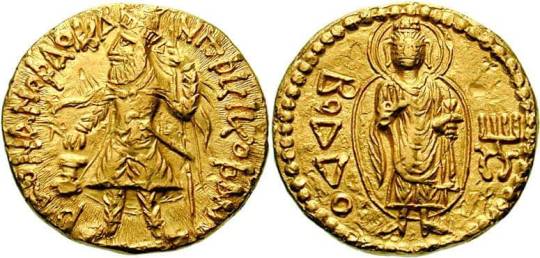

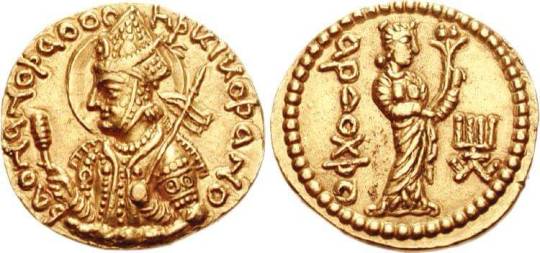
The Kushans were descended from the Yuezhi, a Tocharian-speaking (Indo-European) people originating from today's Xinjiang (Eastern Turkestan) region, who were pushed southwards by the invading Hunnic-Turkic tribes, thereby migrating to Afghanistan and Pakistan regions during the middle of 1st century AD where the Sakas (Scythians) and Parthians dominated/ruled. As the new rulers, the Kushans were able to successfully create a vast and prosperous empire, which at its peak stretched from Central Asia to northwest India, with the capital mostly in Purushapura (Peshawar).
Gandharan Civilization blossomed under the Kushans, with great progress made in the arts, architecture, and sciences. The Kushan Empire's economy greatly benefited from trade since it was in the middle of the Silk Route. Their acceptance and tolerance of many different religions and ethnic groups within their empire welcomed the fusion of diverse ideas/traditions, such as the creation of Greco-Buddhist art styles. Even though the Kushan rulers were culturally and religiously mostly Iranian, many other religions were also patronized or embraced. For example, the famous Kushan king, Kanishka, adopted Buddhism.
The Kushan religious pantheon is extremely varied, as revealed by their coins, on which about 30 different gods appear, belonging to the Hellenistic, the Iranian, and to a lesser extent the Indic world. Bactrian, an Iranian language and the official language of their empire, was mostly used but written in the Greek script.
Representation of entities from Greek mythology and Hellenistic syncretism on coinage are: Helios, Hephaistos, Selene, Anemos, Heracles, and Sarapis. The Indic entities represented on coinage include: Buddha, bodhisattava Maitreya, Mahasena, Skanda Kumara, Shakyamuni Buddha. The Iranian entities depicted on coinage include: Ashi Vanghuhi, Asha Vahishta, Atar, Khwarenah, Drvaspa, Vohu Manah, Mah, Mithra, Mazda vana, Aredvi Sura Anahita, Vata, Oxus, Ahura Mazda, Tir. Additionally: "Oesho" was long considered to represent the Indic Shiva, but more recently identified as Avestan Vayu.
The following are a few examples of Kushan coins with the ruler/king on one side and the god/deity on the other side:
#türkiye#doğa#travel photography#travel destinations#travel#manzara#view#natural#europe#africa#Spotify
30 notes
·
View notes
Text
Dracula Dictionary, May 8th
diffuse: lacking clarity or conciseness
prosaic: everyday, ordinary; characteristic of prose as distinguished from poetry, factual
bear up: remain cheerful in the face of adversity
precipice: a very steep or overhanging place / a hazardous situation
conviction: a firmly held belief or opinion
menial offices: work that is considered to be boring or degrading
mountain ash: a tree, also called rowan, believed to protect against evil beings and to keep travellers from getting lost
Szekelys: a Hungarian subgroup living mostly in the Székely Land in Romania
Ugric: the ancestors of the Hungarians of Central Europe
Huns: a nomadic people who lived in Central Asia, the Caucasus, and Eastern Europe between the 4th and 6th century AD
Scythia: an area in modern day Iran and other areas of eastern Europe
Attila: ruler of the Huns until 453
Magyar: Hungarians
Lombard: also called Langobards, a Germanic people who conquered most of the Italian Peninsula from 568 to 774
Avar: likely refering to Pannonian Avars, an alliance of several groups of Eurasian nomads of various origins
Bulgars: Turkic semi-nomadic warrior tribes
Turk: a native or inhabitant of Turkey, or a person of Turkish descent
Arpad: head of the confederation of the Magyar tribes at the turn of the 9th and 10th centuries
Honfoglalás: the Hungarian conquest of the Carpathian Basin
standard of the King: the king's flag, especially when flown in battle
Cassova: misspelling of Kosovo, a state in Southeast Europe
Wallach: people from Wallachia, the area just south of Transylvania
the Crescent: the Ottoman Empire
Voivode: a local governor or ruler in central or eastern Europe, in particular a semi-independent ruler of Transylvania
Mohács: a town in Hungary
Hapsburgs: an influential royal family in Europe from the 15th to the 20th century
Romanoffs: the reigning imperial house of Russia from 1613 to 1917
87 notes
·
View notes
Text
What was the first Khaganate in Turkic History?
The Formation of the First Turkic KhaganateThe Expansion of the Turkic KhaganateThe End of the Turkic KhaganateThe Uyghur KhaganateConclusioVideo: The Ashina Case – Origin of the GokturksYou may also like
In Central Asian history, the Turkic Khaganate stands out as the first transcontinental empire. It is stretching from Manchuria to the Black Sea. Established by the Ashina clan of the Göktürks,…

View On WordPress
#Early Turkic Khaganates#First Khaganate in Turkic history#History of the first Turkic Khaganate#Impact of the first Turkic Khaganate#Khaganate of the ancient Turks#Origins and significance of the Turkic Khaganate#Rise of the early Turkic Khaganate#Turkic Khaganate establishment#Turkic Khaganate origins#Turkic Khaganate rulers and expansion
1 note
·
View note
Text
Headcanon notes about Fódlani diaspora populations outside of Fódlan
Scothaic ("excellent/elite" in Irish, endonym): northerners from Nemesis Dynasty who fled to Dagda (with the help of Brigidans)
Qispichisqa ("rescued" in Quechua, exonym but eventually adopted by the group): Adrestians from the counter-invasion following First Mach War who didn't (couldn't) return to Fódlan
Akbunuzi ("white horn" in Turkic, exonym): refugees of Sreng-Faerghus conflict, with largest populations in northwestern Almyra
Fideli ("faithful" in Italian, endonym): Southern Church exiles, with largest populations in southernwestern Almyra
Bazargani/Tajari depending on the region ("sell/trade/merchants" in Persian and Arabic, technically exonym but plenty adopted it for themselves): descendants of Leicesterian merchants in Almyra who continue to speak the language
My worldbuilding is that the Dagdans from the First Mach War and Dagdans from the more recent war are actually entirely different groups btw. First one, which I'll call Middle Dagda, is based on Teotihuacan (+other city states across Mesoamerica under its influence), second, which I'll call Lower Dagda, is based on the Inca Empire (except it's on the east coast on the continent instead of west). Although people in the two regions are aware of each other due to trade through Brigid (think of them as Pacific Islands in the Atlantic), the civilizations emerged independently and don't consider themselves to be part of the same group.
More about the diaspora populations under the cut
Scothaics fled from Fódlan to Middle Dagda late in the War of Heroes, and they were originally reviled by Middle Dagdans due to their "barbaric" cultures + bringing over all kinds of diseases. But elites of Middle Dagda soon realized their unsavory reputations made them useful soldiers, which resulted in many Scothaics rising in status through battles, and after a few hundred years of intermarriage they came to be considered just one of the many ethnic groups in Middle Dagda by others there.
Still, many Scothaics clung on their cultural identity as people of Nemesis' Fódlan, and the idea that they should retake the continent from Adrestians (even if they'd rule from Dagda upon succeeding) remained popular among them; they were one of the (but not the only) major factions within Middle Dagda who pushed for the First Mach War. Other Middle Dagdans think Scothaics are LARPing whenever they do the "we were Elites n shit" because by all means they've completely integrated into Middle Dagda now, but they let them have it because it can be politically useful.
Qispichisqas were Adrestians in the post-First Mach War Dagda exploration parties who made their way past Middle Dagda (their recent enemies) to the mountains of Lower Dagda, then got trapped there. The Adrestian government made no effort to retrieve them, but they were saved by the ruler of a prominent city-state near a lake, who they swore undying allegiance to. As that city-state expanded to an empire spanning north and south of the Lower Dagdan coast, they also began to deify the ruler, which was adopted and spread enthusiastically by the Qispichisqa, as it was similar to what the Adrestian emperors liked to do. As a result, the Qispichisqa hold a syncretic faith that's a fusion of early~middle Church of Seiros practices and Lower Dagdan religion.
At the time of canon, they still consider themselves to be followers of Sothis, but they also believe that their ruler is the rightful ruler over followers of the goddess, not the Adrestian emperor; from their view, the current Adrestia (and Fódlan as a whole) has strayed too far from the faith. Qispichisqa don't have a "retake the land" thing going on like the Scothaics because they consider Lower Dagda to be their home and holy land now, but they certainly had no qualms about invading Fódlan once their ruler ordered, either.
Scothaics and Qispichisqas do not get along if they meet each other, and do not consider themselves to part of the same demographic, whether that's Fódlani or Dagdan, mostly for religious reasons. That being said, they don't come into contact with one another that often; again, Lower and Middle Dagda are pretty far away from one another, and the geography would make a war between them very cumbersome, so the two regions try to not step on each other's toes. Sometimes they have scuffles over Brigid, but when that happens both armies are usually more preoccupied with killing Brigidans.
As you might expect from that, Brigidans do not like Scothaics or Qispichisqas alongside other Middle/Lower Dagdans and Fódlanis, and many not-so jokingly say that their ancestors helping Scothaics escape to Dagda was their worst mistake.
Akbunuzis are northern Faerghans in Almyra who crossed the Whitehorn Sea to flee the Faerghus-Sreng conflict, starting at or before 892 with new waves coming in every so often. The community is very poor, with many turning to crime for survival; as a result they have a poor reputation among larger Almyran society. Despite Almyra already being a multi-ethnic and cultural society, the government didn't make much effort to try and integrate the Akbunuzi, partially because they tend to be religiously and culturally rigid, mostly because the government needs there to be criminals for the military to hunt in order to advance their careers and recent immigrants made for easy targets.
Some Akbunuzi attempt to return to Faerghus, but reality is harsh, they are scorned there, too, for being "too Srengi" (as northern and northwestern Almyra also has lots of Srengis or similar ethnic groups and is strongly influenced by their culture + there's some intermarriage) and/or "too Almyran."
Fidelis are Southern Church Adrestians who supported Victoria von Hrym in 1065 and were subsequently exiled. Some went to the Eastern Church in Leicester, but others crossed the Pearl Sea to southwestern Almyra. Fideli are also known for not integrating into Almyran society, and are even more insular than the Akbunuzi. Many have "taking Adrestia back from heretics on the promised day" as their goal, and as a result religious extremism and indoctrination is very rampant within the community; they also have very high birthrates, and other Almyrans often scorn them by calling them biohazards/pests.
Some spread malicious rumors about beliefs of Church of Seiros after bad encounters with the Fideli, and the government makes little effort to dispel those, or to deradicalize and integrate Fidelis; partially because, again, it's legitimately difficult, but also because fueling prejudice towards easy targets is useful for staying in power and justifying constant military operations at the border.
People who identify as Bazarganis/Tajaris, aka Leicesterian-Almyrans in specific instead of just Almyrans with general Fódlani ancestry, usually have ancestors who moved to Almyra after the Leicester Rebellion of 801 at the earliest and mostly during~after the Crescent Moon War in 881. That being said, a lot of Almyrans with Leicesterian ancestry don't identify as Bazargani/Tajari after a few generations; most of their families were fairly well-off merchants who came to Almyra for economic opportunities, so many quickly changed religions and intermarried/integrated into ethnic groups that would provide them better connections.
Because the language(s) of Almyra and Leicester already overlap, Bazargani/Tajari identification is based mostly on religion; usually those who call themselves such are involved in businesses that sell across the border, necessiating that they stay in touch with their homelands.
Akbunuzis, Fidelis, and Bazarganis/Tajaris absolutely do not get along with one another, as old grudges and prejudices carried over from Fódlan gets amplified by the differences in socioeconomic conditions in Almyra.
Akbunuzis think Fidelis give their faith a bad name and that Bazarganjs/Tajaris are selfish and irresponsible for being rich yet not helping other Fódlani-Almyrans; Fidelis hate Akbunuzis for being "enemies of the Saints" (because they're descendants of northerners) and Bazarganis/Tajaris for being unfaithful/apostates/etc; and Bazarganis/Tajaris don't want to be associated with the "backwards and uneducated" Akbunuzis and Fidelis under the umbrella label of Fódlani. Things often get ugly between the communities if news of something happening in Fódlan reaches them, with violence/riots being an expected occurence. The reaction of larger Almyran society to such incidents is usually something like, "oh look the barbarians are being barbaric again, but why do they have to do it in our country."
That being said, the three populations do have something in common, and it's that they tend to not serve in the Almyran military. For Akbunuzis, it's because making money from crime is easier than signing up for the military, and if they try to sign up later, they'll get screened and cut and arrested because of the criminal records/connections. For Fidelis, it's for religious reasons; they won't serve a master other than the goddess and they won't fight for a cause other than taking back Adrestia from the heretics. For Bazarganis/Tajaris, they usually pay instead of sending soldiers, which is legal and the government lets them, but socially, it's a bad look— that's exactly where the stereotype of Fódlanis being cowards come from, and many see it as sign that their allegiances lie with their Fódlani homelands rather than Almyra.
Things presumably get better post-canon once Claude takes the throne; it wouldn't be easy, but getting people with Adrestian and Faerghan heritage on his side was probably good for diplomacy with Fódlan, too.
#fe3h#fire emblem three houses#fe3h worldbuilding#almyra#dagda#brigid#fodlan#slotalks#fe3h headcanons
9 notes
·
View notes
Text
Tozhu/Tozhu Tuvan OC
Name: Kara-Kat
Birthdate: 13-15th century
I gave her the Tuvan name "Kara-Kat" which means blackberry because honestly, I thought it was cute. Also, it's extremely hard to find Tozhu names in particular. However I don't think it's not strange for her to have a Tuvan name as the Tozhu have lived with the Tuvans for a while and the Tozny Tuvan territory is a part of Tuva, and Tuvan is their first language.
The origins of the Tozhu Tuvans are widely contested however it is seemingly a common consensus amongst various ethnographers of the North East that they most likely had Samoyedic origins. Dolgikh, a prominent ethnographer of the North East, classifies the Tozhu Tuvans as being a distinct group with Samoyedic origins/are a Samoyedic language people, as opposed to Tuvans who are Turkic-Mongolic.
On Tozhu as a region of Tuva and Tuva as a whole being connected: Historically, the Tozhu land was also distinct from what was then Tuvan land. The Tozhu region of Tuva is the largest, however the least densely populated. When the Tozhu territory became part of the Qing, the Western and Central areas of Tuva were not a part of this, and instead were ruled by the Oirat Mongol (by Oirat Mongol I'm not talking about hws Mongolia I'm talking about a different Mongolic group) Zhungar Khanate. Historically, the Tozhu region was distinct from Tuva until 1757, when the Zhungars were ultimately defeated by the Qing. Tozhu, along with Tuva, then came under rule of the Qing dynasty until 1911. Like the other reindeer herders, she pretty much just was content doing her own thing and trading with whoever and became subject to many different rulers over the course of her lifetime.
The ancestors of Tuvans as opposed to the Tozhu Tuvans according to scholars are most likely from a loose confederation of Turkic language speaking tribes who descended from the Huns, and as early as the 6th century inhabited the Altai, Northwestern Mongolia and what is now Tuvan territory.
I am still a little lost as to what century I'd give to Tozhus birth date. In the modern day Tozhu region, the tribe name that was mentioned the most was called "Dubo" and this was recorded by Tang dynasty chroniclers. This is believed to have been derived from an evolution of ethnonyms that produced a variation of names, such as Tuva, Tofa, Topa, Tuba, Dukha. Perhaps a common ancestor? As mentioned before, these names were first recorded during the Tang dynasty however it ts unknown if these ethnonyms were always Turkic or were originally Samoyedic and then Turkicized. I think whoever the “Dubo" could have been an ancestor to her.
We know that the Tozhu came into closer contact with the Russia in 1944 once Tuva was annexed so they must have been around before then, and similar groups to the Tozhu like the Tofa/Tofalar have an even longer history of contact with Russian which began in 1648. I'm going to be safe and say perhaps they emerged anywhere between the 13-15th century.
The reindeer herders of the Eastern Sayan, Tozhu, Tofa, Soyot and Dukha are undeniably linked. The territories in which they inhabited are mountainous, forested, isolated and difficult to reach. This in turn, provided them a haven from Turkic and Mongolic invaders alike, as noted by ethnographer Larisa Raylinskaya.
When reading about the reindeer herders of the Eastern Sayan, I came across a remark that these peoples are unique in a sense that they've never shed blood nor engaging in conflict - but only fleed/escaped danger when it came nearby. It is said that those who retreated in these mountains are the ancestors to the Soyot, Dukha, Tazhy and Tofa.
Onto why the Tozhu people are called "Tozhu Tuvans" again and why, despite being called this, are distinct from the wider Tuvan population of Tuva and therefore from a historical and ethnographical standpoint AND a hetalia standpoint, Tozhu would warrant it's own personification - hence why I am talking about Miss Tozhu right now!
Once the Tozhi were incorporated into the u
Uriankhai by the Mongols and then later on becoming a part of the Tuva republic - by virtue they were considered Tuvans, even a Tuvan subgroup - which is a bit of a misconception. The Tozhu live in Tuva, and so are called Tozhu Tuyans by virtue of living there, however ethnographers of the North East almost unanimously agree that the Tozhu are their own distinct people.
Miss Tozhu does not mind being called a "Tozhu Tuvan" as she is part of greater Tuva, however her lifestyle is different from Tuva's traditional lifestyle, and she's quite keen on letting people know that she is not exactly a “Tuvan” and has her own history and lifestyle - thank you very much! She doesn't get into a huge fuss if she’s called a Tozhu Tuvan or whatnot as that's not technically incorrect, however she does have her own history she’s proud of.
A brief and kind of story which highlights the differences between the Tozhu and Tuvans: A Tuvan buddhist (Tuyans are predominantly buddhist) visited the Tozhy region and set up a kuddhism study club. None of the locals were interested (i think Miss Tozhu probably snorted at this.) Miss Tozhu, despite being part of Tuva, doesn't have many of the same interests as Tuva and doesn't really put in an effort to be interested, not because of malice (though, she will say something snarky tf someone calls her a "sub-group" of Tuvan) but simply because she's content with doing her own thing like she has been doing for a few hundred years now. Tuva knows this but can't help but take it as a slight sometimes. It's not as if she's disconnected from Tuva of course. However she's definitely not going to be joining any of Tuva's Buddhism book Clubs anytime soon.
The Tozhu are animistic/shamanistic. While Tuvans and even Mongols originally were also animistic/shamanistic, a majority of them have turned to buddhism. The Tazhu, like the other reindeer herders of the Sayan, have little to no interest in buddhism. I see her as still being quite in touch with her practice and kind of tuts at Dukha when she sees him camping outside Ulaanbaatar (capital of Mongolia) during Christmas time and charging Mongolians to ride on the reindeer (also because hey don't just let anyone on your reindeer you don't know if they'll behave and those are your livelihood-) but ultimately (begrudgingty) respects his grind.
Circling back to the Uriankhai - the exact meaning of Uriankhai has been contested. During Qing rule of Mongolia, Mongolia governed Tuvan territory and assigned the term "Uriankhai" to Tuvans and pretty much anyone on or around Tuvan territory if they were close enough. Therefore, it was and to this day, still is a generic term to refer to the peoples North West of Mongolia, hence Tuvans being the major group under the Mongolian label "Uriankhai" meant that a lot of other “Uriankhai” people such as the Tozhu and Soyots and Dukha were misrepresented as being Tuvan. This definitely irked Miss Tozhu but it’s not as if she can do anything about it. Sometimes she'd point out how hypocritical Mongolia was when he'd rant about people still referring to him as Tatar when he calls different groups the same name himself all the darn time and yes she thinks his reaction is hilarious.
Not only are the Tozhu distinct from Tuvans in their (most likely) Samoyedic heritage as opposed to the Turkic Tuvans, but so are their lifestyles. The Tozhu live in birch-bark tipis which are typical of reindeer herders, whereas the Tuvans live in felt yurts. Tuvans have had more direct contact with Mongols whereas the Tozhu (whether on purpose or not) managed to avoid as frequent contact with Mongols, Tuvans raise livestock for meat whereas the Tozhu rely on hunting for their meat - they do not eat their reindeer.
Major Tozhu clan names, such as Todot, have Ket origins, and other major Tozhy clan names such as Choodu, Kyshtag, Khaazyt etc are Samoyedic in origin, further indicating that Tozhu's Samoyedic origins and close ties to the Ket people. In
fact, the Tozhu language is so distinct from the Tuvan language that Tuvans call the Tozhy language "Tozhu Chugaa”, meaning “Tozhu talk", Tozhu would prefer it if Tuva just called it the "Tozhu language" and sometimes tries to correct him into calling it that but she guesses that that distinction is good enough for the time being.
I don't think Tozhy and Tuva dislike each other at all by the way, it's just that they don't really have too much in common, but ultimately they do respect each other and there's no hard feelings between them (for the most part), probably because historically they haven’t had conflict with each other and well now they pretty much live next to each other, so. Tuvan ts the first language of many Tozhu people, and the use of the Tozhu language has been waning, though it is in a far better position compared to the Tofa and Soyot languages. They sometimes bicker about this. They have grown closer over the years due to living next to each other and of course, the Tozhu are widely called the Tozhu Tuvans.
So who does Miss Tozhu relate to then? Miss Tozhu finds a lot in common with the other reindeer herders of the Sayan, the Soyot, the Tofa and the Dukha with Miss Jozhu living in the South Western quadrant.
Like the other reindeer herders, Miss Tozhu greatly respects her reindeer. As noted before, the Tozhu have to hunt for their food unlike the Tuvans who raise livestock for theirs - the Tozhu, like other reindeer herders, do not eat their reindeer. In fact, the reindeer herders of the Sayan avoid killing animals unless it is absolutely necessary. They rely mainly on fish and wild game for their protein intake. It is speculated that Reindeer herding may be the oldest form of animal husbandry in Siberia/North East Asia.
I think out of the reindeer herder gang, Miss Tozhu is the one who usually gets them all together and is the most extroverted. They're all quite closely related when it comes to their lifestyle, language and origins. In addition, she and Tofa are very keen on rekindling their old relationship. Historically these two groups are quite close but became divided due to the administration under the Russian Empire.
In addition, Tofa's close contact with Russia as opposed to Tozhu means that the Tofa have pretty much abandoned their traditional way of life and their language, however this is not the case with the Tozhu. The situation is the same with Soyot.
The Soyot and Tofa were in the original 26 “officially designated Indigenous Small-Numbered groups of the Russian federation." Due to this and the influx of Russian and Buryat (in Soyots case) culture and language, along with the collectivization policies implemented and the downfall of the USSR which lead to the collective institutions also collapsing, these two groups have lost their native language and lifestyle.
The Tozhu were also incorporated into this grouping, however in a much later date - 1993. The Tozhu also have a larger population, so of course they were harder to assimilate.
The Russian period for the other reindeer herders was extremely hard on them because of the collectivisation policies - it's not exactly a time they enjoy remembering however the ugly memories still rear its head. Despite Tozhu not being so affected by Russia as most of the other reindeer herders were, she gets slightly paranoid about the safety of all her reindeer as a result. So she sometimes finds herself scolding Dukha, for example, when she sees him being "careless" with his reindeer.
As in, camping outside Ulaanbaatar and charging any random Mongolian civilian money to ride on his reindeer during Christmas time (the Dukha fled from the Russian collectivisation policy and so was not subject to it.)
So, in short:
Generally quite chill but has that (1) thing that will make her go >.> (calling her merely a Tuvan subgroup) The most extroverted out of the reindeer herder gang!
Can kind of give older sister vibes
Bickers with Tuva like they're an old married couple sometimes
Has pictures of her reindeer in her wallet and is kinda paranoid about their safety at any given time
Likes to do a little trolling from time to time
I think Tozhu trying to uh “save” Soyot from Buryatia's clutches is quite funny (the Soyot are extremely assimilated to the Buryats)
Because a lot of Tozhu clan names are Ket in origin, she does try to have nice chats with him, even if he uh is keen to get back to his own little routines after they stop talking.
Tozhu: L + ratio + ur a Buddhist
Tuva:
Sources:
“HEY, YOU! GET
OFFA MY TAIGA!”
COMPARING THE
SENSE OF PROPERTY
RIGHTS AMONG THE
TOFA AND TOZHU-
TYVA - Brian Donahoe
A LINE IN THE SAYANS:
HISTORY AND DIVERGENT PERCEPTIONS OF PROPERTY AMONG THE
TOZHU AND TOFA OF SOUTH SIBERIA - Brian Donahoe
Naming Practices and Ethnic Identity in Tuva - K. David Harrison
#Hws Tozhu#Aph Tozhu#Hws Tozhu Tuva#Aph Tozhu Tuva#Hetalia Tozhu#Hetalia Tozhu Tuva#hetalia#hetalia world stars#hetalia world series#hetalia world twinkle#hetalia ocs#Hetalia oc#Hws Tuva#Aph Tuva#Hetalia Tuva#Historical hetalia#OC: Kara-Kat#Hetalia Siberia#Aph Siberia#Hws Siberia
12 notes
·
View notes
Photo

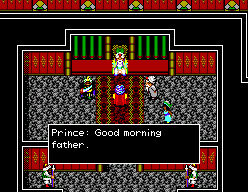
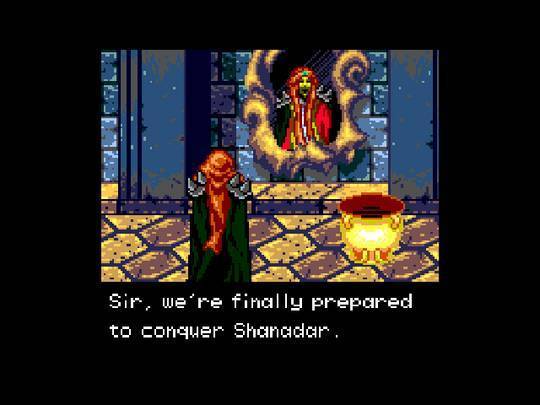

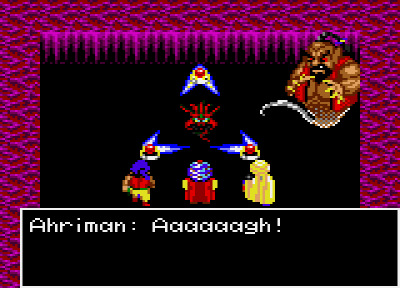
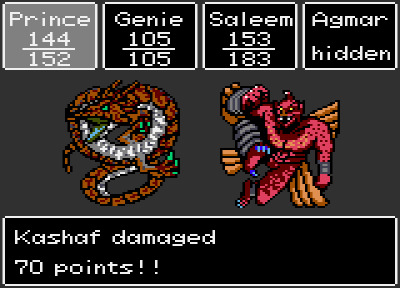



“Defenders of Oasis” (1992) was a rare Game Gear exclusive RPG, with a storyline that was based on Zoroastrianism, a pre-Islamic Silk Road religion that originated in Ancient Persia. The Oasis they refer to are broadly based on the Six Oasis Cities in Western China, ruled by mixed Persian/Uigurian/Turkic rulers, and who often practiced Zoroastrianism, Buddhism, Nestorian Christianity, and Manicheanism (and in fact, was the place that spread Buddhism from India to China). Today, the only member of the Alliance of Six Oasis Cities to remain as a mostly large metropolis today is Khotan. Nearly all the rest were swallowed up by the Taklamakan Desert.
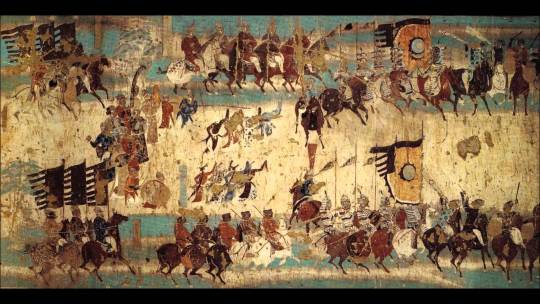
According to Zoroastrianism, the first, mythological world-spanning Persian Empire was destroyed when King Jamseed fell into moral decline and lost his eternal nimbus of flame. When that happened, a three headed dragon, Zahak, the son of the Zoroastrian Devil (who is, incidentally, usually represented as a wolf) took over the world as a sorcerer king, and ruled for 700 years with help from demons he mastered with black magic. All that changed when a descendant of the Persian King defeated the dragon with help from the archangels, and who locked Zahak up in the earth, at least until he returns to kill a third of the population of the world on Zoroastrian judgment day. It is this story that the Genesis game, Defenders of Oasis is based on.
293 notes
·
View notes
Text





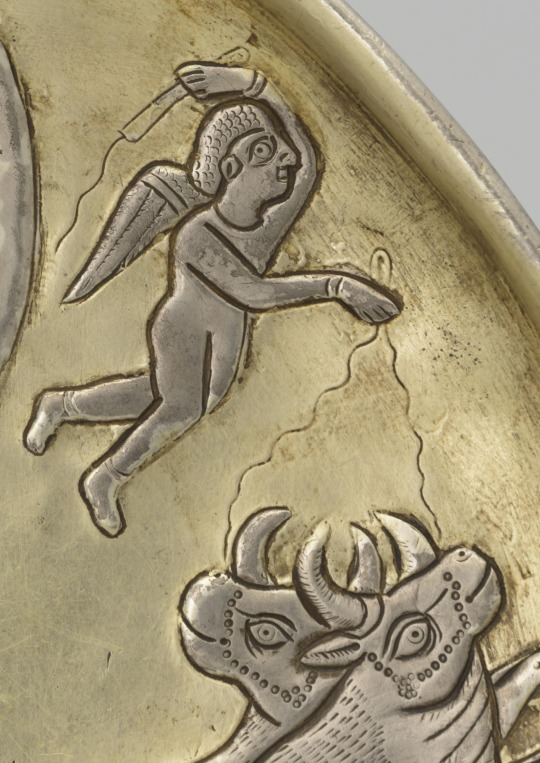
Sassanid silver plate 7th C. CE. Decorated with a figure seated on a couch in a crescent moon and a figure standing in an archway. Found in Klimova, Russia in 1907. The base of the vessel appears to have runic script scratched into it. This item is sometimes referred to as The ‘Clock of Khosrow’ or The ‘Throne of Khosrow’ Plate. Diameter: 21.6cm.
I'm just going to do a brief summary of what caused Persia to fall to Islam.
The Islamic invasion of Persia began sometime between 628-632 CE. From 541 CE to this time Persia had been exhausted by an almost constant state of war. Most of the fighting was with the Byzantine Empire in the west: The Lazic War (541-562), Byzantine–Sasanian War of 572–591, Byzantine–Sasanian War of 602–628.
However, there were also wars with the Turks to the north and the east: Perso-Turkic war of 588–589, Perso-Turkic war of 606–608, Perso-Turkic war of 627–629. In this final war the Byzantines and Turks were allies. This alliance took time to come into being but had been sought out by the Turks almost immediately after they destroyed the Hephthalites, indicating they planned to do to the Persians what they had done to the Huns. The medieval historian Movses Kaghankatvatsi described the war of 627-629:
"At the arrival of the all-powerful scourge (universal wrath) confronting us, the invaders [Turks], like billowing waves of the sea, crashed against the walls and demolished them to their foundations. [In Partaw], seeing the terrible danger from the multitude of hideously ugly, vile, broad-faced, without eyelashes, and with long flowing hair like women, which descended upon them, a great terror (trembling) seized the inhabitants. They were even more horrified when they saw the accurate and strong [Khazar] archers, whose arrows rained down upon them like heavy hailstones, and how they [Khazars], like ravenous wolves that had lost all shame, fell upon them and mercilessly slaughtered them on the streets and squares of the city. Their eyes had no mercy for neither the beautiful, nor handsome, nor the young men or women; they did not spare even the unfit, harmless, lame, nor old; they had no pity (compassion, regrets), and their hearts did not shrink at the sight of the babies embracing their murdered mothers; to the contrary, they suckled blood from their breasts like milk."
Ironically, the Sassanid ruler Khosrow I had married a Turkic princess to win an alliance with them so the two could destroy the Huns together in 560 CE at the Battle of Gol-Zarriun. Khosrow I chose his Turkic progeny, Hormizd IV, as ruler over his Persian children. From Iranica Online:
"Hormozd’s character displeased everyone. He antagonized the Zoroastrian clergy, allegedly killing many of them, even the chief mowbed, and alienated the nobility by killing thousands of them (Ṭabari, I, p. 991; tr., V, pp. 297-98; Balʿami, ed. Bahār, pp. 1072-73; Masʿudi, Moruj, ed. Pellat, sec. 632; Šāh-nāma, Moscow, VIII, pp. 319 ff.). In diplomacy he showed inflexibility, even poor judgement. He disrupted the peace negotiations with the Byzantines and made demands (payment of “tribute”) that the Romans could not accept (Menander, frag., 23.9-24-12529). His contemporary, Menander Protector, lamented that “the Romans and the Persians would have made peace, had not Ḵosrow left this life and his son, Hormisdas [Hormizd IV], a truly wicked man, assumed the crown” (tr., pp. 207-9)."
Finally the Sassanid Empire went into a civil war from 628-632 CE where it had become politically decentralized. The Plague of Sheroe also occurred in 627-628 CE, most heavily devastating the populations in the western provinces with some areas experiencing a 50% mortality rate. Afterward, the Arab Muslims flooded into an already ravaged Persia like bacteria infesting an open wound.
96 notes
·
View notes
Photo
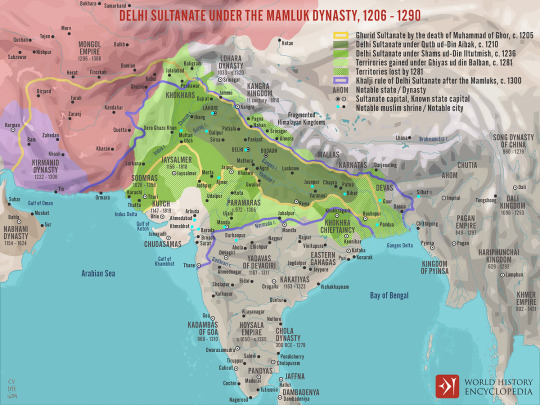
Delhi Sultanate under the Mamluk Dynasty, 1206-1290
A map illustrating the rise and evolution of the Sultanate of Delhi during the times of its first ruling dynasty – the Mamluks (also known as the Slave or Ghulam Dynasty), an influential military class of slave soldiers between 1206 and 1290. Following the assassination of the childless Muhammad bin Sam, popularly known as Muhammad of Ghor, in 1206, the Ghurid Sultanate shattered into minor kingdoms ruled by Mamluk commanders. The appointed governor of the Indian territories, Qutb ud-Din Aibak, a Turkic slave general, became the ruler of what was to become the Sultanate of Delhi. Through its turbulent history (until 1526, when the invasion of Babur swept it aside, the Sultanate was ruled by five unrelated dynasties), multiple autonomous states challenged the influence and control of the Delhi Sultanate in the fertile lands between the rivers Ganga and Jamuna, which was reflected in its ebbing and ever-changing frontiers.
Image by Simeon Netchev
39 notes
·
View notes